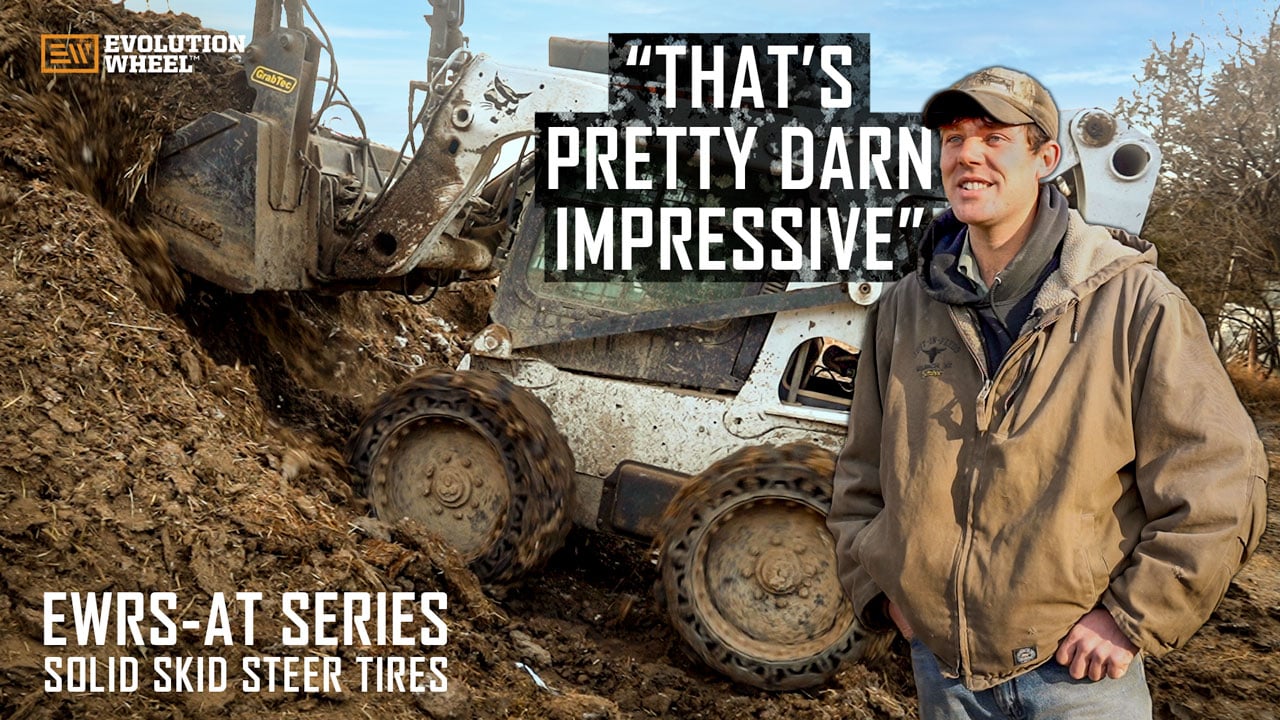Serviceable Skid Steer Tires That Minimize Downtime on the Job Site
What Is a Segmented Tire?
Segmented tires are solid tires composed of rubber segments that attach to the rim of the tire. All Evolution Wheels’ tires are segmented and attached to a high-strength steel rim with nuts and bolts. As a result, the service tools are reduced to just a wrench.
Why Are Segmented Tires Better?
Segmented designs have many advantages. The main reason is serviceability. The EWRS-AT and EWRS-HS Series solid skid steer tires allow the operator to remove and replace segments with only a ¾” wrench. Non-segmented tire options on the market don’t have this serviceability. When operating over rebar, and jagged concrete chunks, damage can occur such as chunking or ripping. If the non-serviceable solid steer tire is damaged, the whole tire must be replaced. This gets expensive even if you are using a premium option.
With a segmented option like the EWRS-AT or EWRS-HS Series solid skid steer tire, chunking or ripping isn’t a big issue. With a spare segment, you can replace the damaged rubber segment whenever it occurs. For a fraction of the price. We recommend spare segments for this exact purpose when operating our tires in applications such as demolition. While they are built to withstand highly abrasive conditions, this helps you avoid downtime if a segment is damaged.
The segmented design also allows the tread to be easily changed when it is 100% worn. We offer retread kits that include a completely new set of segments without the need to buy a new rim. This keeps the cost down and you don’t need to worry about bringing the tire into a tire shop to get a retread either. An operator can change the tread themselves on the job site without issue.
What Other Advantages do Evolution Wheel Tires Provide?
Both the EWRS-AT and EWRS-HS Series solid skid steer tires tread patterns are designed to eliminate the center wear bar. Other tires need a center wear bar to support the tread. As their tread wears to 50%, the traction is reduced, and they start to spin. The EWRS-AT Series solid skid steer tires lugs are the widest at 2.5” and 52/32” deep. This allows the lugs to be strong enough to not need a center wear bar, increasing the longevity of the tire and traction. The EWRS-HS Series solid skid steer tire has a unique tread design with an increased ground contact area for longevity on hard surfaces.
Both tread designs have void space for increased traction and unmatched material cleanout. Because the EWRS-AT tires have fewer lugs than other tires on the market, they do not get clogged up with mud and become stuck.
Both tires have unique core geometry for tire compression. Solid tires have a reputation for being too stiff and rough on both the operator and the machine. This is due to the apertures in the rubber not being flexible enough. The EWRS-AT and EWRS-HS Series solid skid steer tires have core geometry that is designed to flex like a pneumatic skid steer tire to combat this. It is important to remember that the core geometry also provides shock absorption. The shock absorption eliminates the bounce that a pneumatic tire has. Meaning that these tires can skid smoothly when performing tight turns.
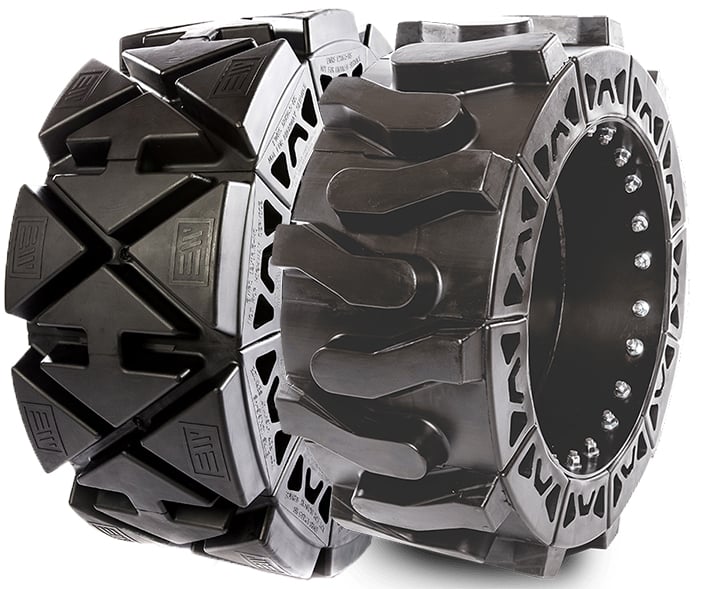
*Also Available in Non-Marking
| Actual Tire Dimensions | ||||||
|---|---|---|---|---|---|---|
| Tire Size | Overall Diameter | Width | Rim Diameter | Wearable Tread Depth | Weight | Max Load Rating |
| ----- | Inch (mm) | Inch (mm) | Inch (mm) | 32nd (mm) | lb (kg) | lb (kg) |
| 10x16.5 | 31.5" | 10" | 20.5" | 48 | 200 lb | 4710 lb |
| (31x10-20) | (800) | (254) | (521) | (38) | (91 kg) | (2136 kg) |
| 12x16.5 | 32.5" | 12" | 20.5" | 52 | 220 lb | 6780 lb |
| (31x12-20) | (826) | (305) | (521) | (42) | (100 kg) | (3075 kg) |
| 14x17.5 | 36" | 14" | 24" | 52 | 360 lb | 8540 lb |
| (36x14-24) | (915) | (356) | (610) | (42) | (163 kg) | (3874 kg) |
Related Pages
If this page was informative, check these out:

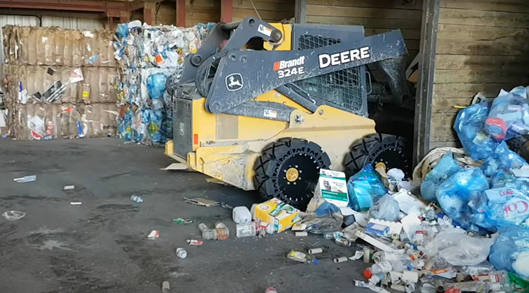
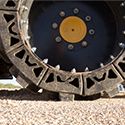
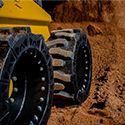
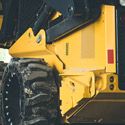
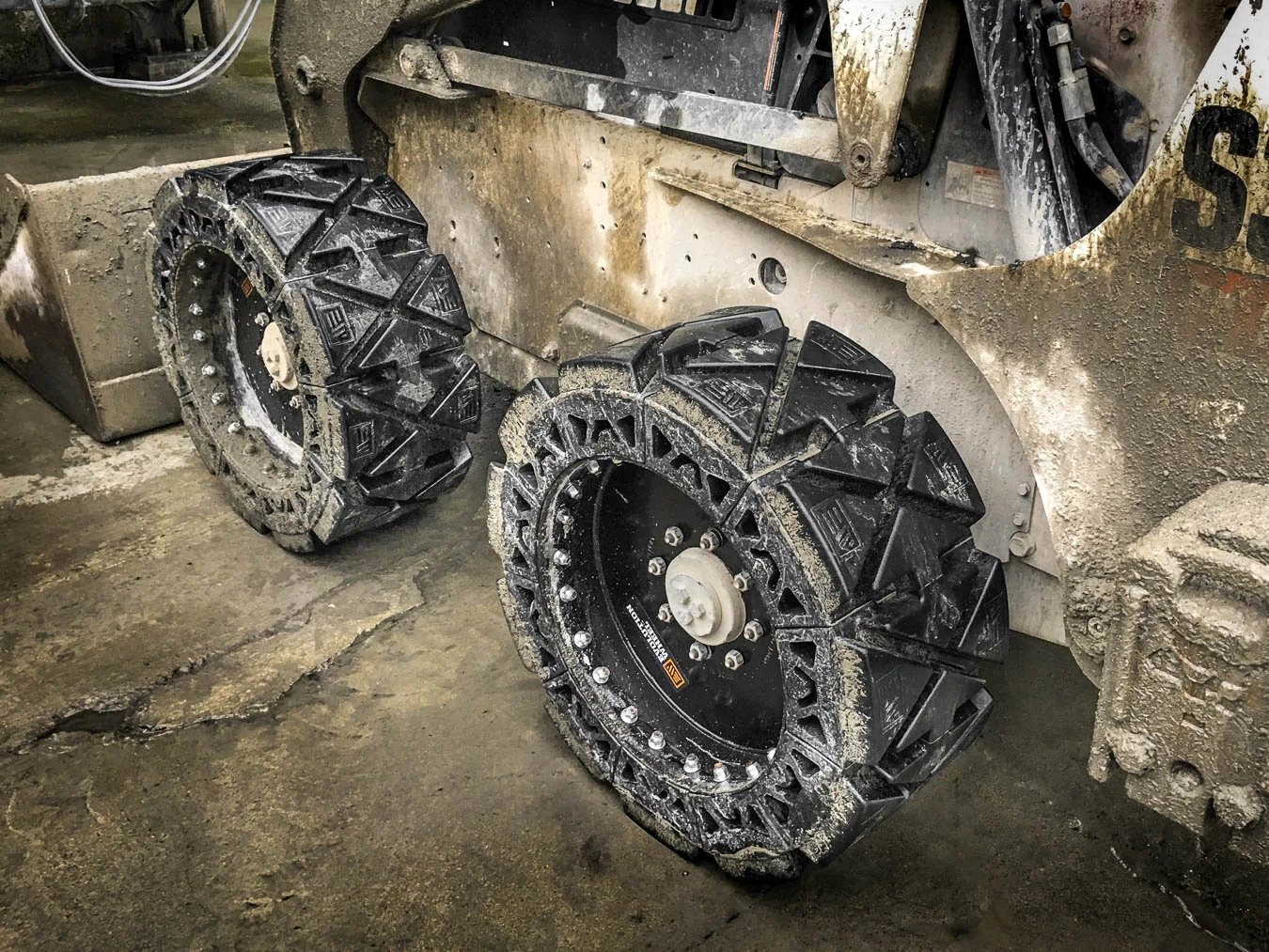
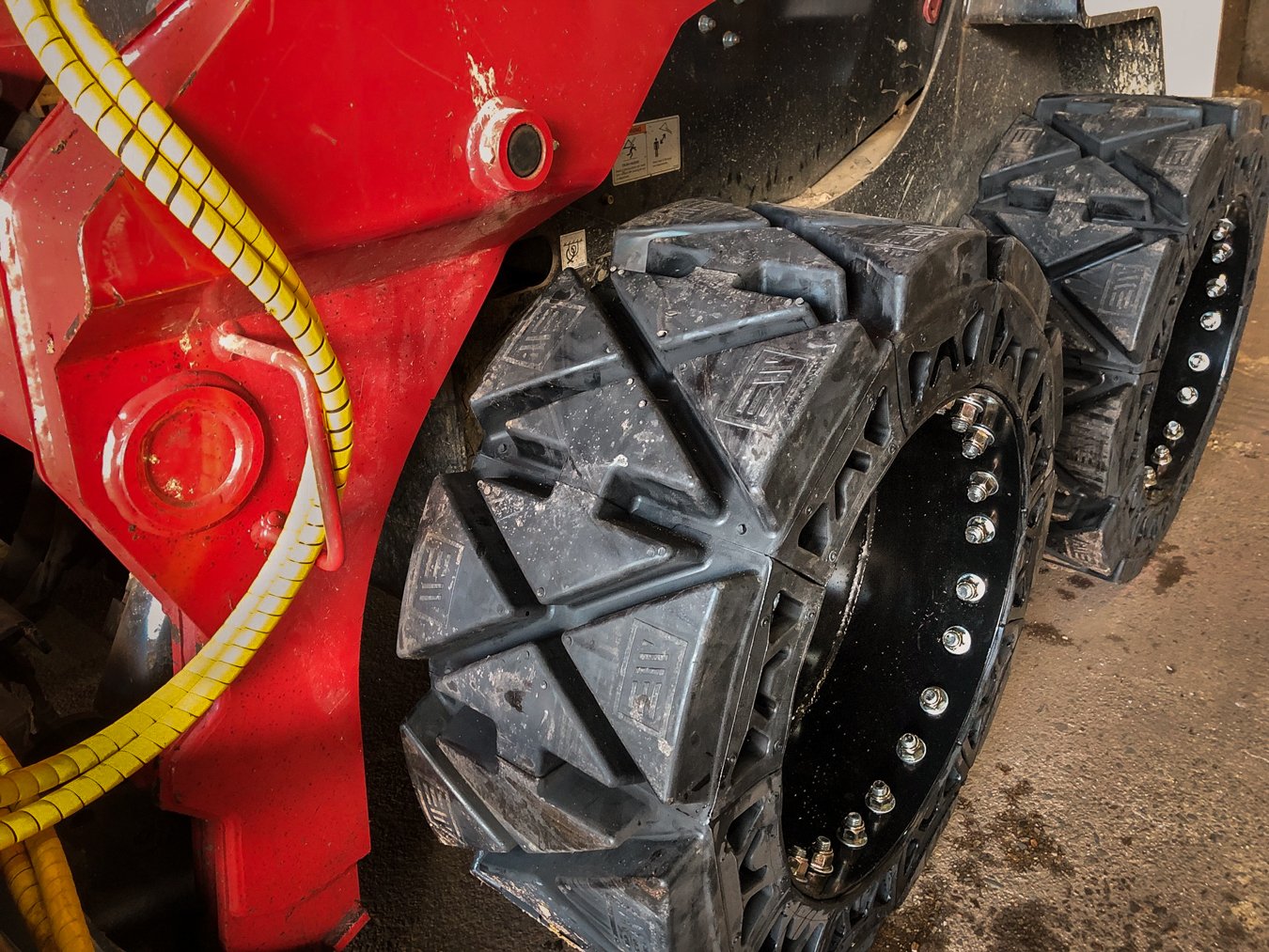
.jpg?width=1350&height=1013&name=BOBCAT%20S570%20EWRS-HS%20(2).jpg)
